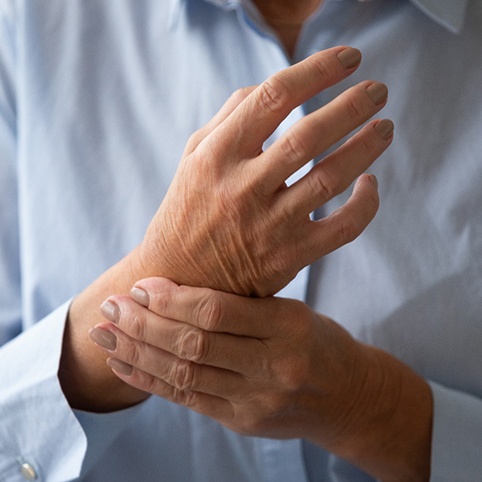
Fax: (860) 430-9693
Glastonbury, CT 06033

When people start to experience chronic hand and wrist pain, often, their first thought is that they might have Carpal Tunnel Syndrome. While this is a fairly common condition, it is not the only one that can create discomfort in the hands and wrist. At the New England Stem Cell Institute, Dr. Paul Tortland can help patients diagnose what is causing their problem with extreme precision, and if it is CTS, he can provide several treatments proven to alleviate it. If any of the following symptoms sound familiar, be sure to schedule an appointment today, as they will likely only get worse over time.

The initial symptom that the majority of people experience with CTS isn’t pain, but numbness or tingling, primarily in their fingers. This is because the median nerve is being compressed by inflamed tissue in the Carpal Tunnel, a small space in the wrist that allows the nerve to reach the fingers.

As the muscles, tendons, and ligaments in the Carpal Tunnel become more irritated and inflamed, they apply more pressure to the median nerve. This is why those with Carpal Tunnel Syndrome tend to have pain that worsens after performing an activity, namely one that involves the wrist being bent up and down for a long time, which is why many athletes and construction/assembly line workers develop it. Things like driving and holding your phone may worsen the pain as well.

The median nerve runs from your fingers along the entire length of your arm into your shoulder. With untreated CTS, the stress placed on the nerve can lead to symptoms above the wrist and fingers. Many of our CTS patients come to us because they are experiencing forearm and shoulder pain and are surprised to find out that the source is actually their wrist!
Over time, CTS can compromise the ability of the hand to function. Patients may find that their grip is affected and they tend to drop things more often, or they might have difficulty handling smaller objects. It can also become much harder to make a fist.
Carpal Tunnel Syndrome is a progressive condition, meaning without intervention, the symptoms will worsen, eventually making surgery the only solution. Thankfully, there are many proven, non-invasive ways to treat CTS, including activity modification, bracing, and physical therapy. Dr. Tortland can also provide numerous regenerative medicine techniques, such as PRP and stem cell therapy, that can stimulate healing and reduce swelling in the tissues of the Carpal Tunnel so they place less pressure on the nerve. He can also do something called nerve hydrodissection, in which the nerve in the wrist is coated with a fluid that essentially cushions it.
In any case, time is not your friend if you suspect you have CTS, and by coming to see us sooner rather than later, you’ll have more options for treatment and enable our team to get you out of pain and feeling like yourself before you know it. To learn more or schedule an appointment at the New England Stem Cell Institute, contact us today.